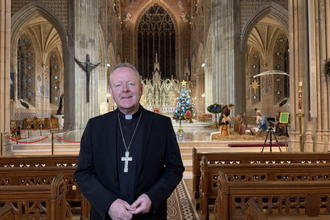Edward Burne-Jones at Tate Britain

This is the first major Burne-Jones retrospective to be shown in London since the centenary exhibition of 1933, and charts his rise from artistic outsider to one of the great European artists of the fin de siecle.
Edward Coley Burne-Jones (1833-1898) was born in Birmingham and attended the Birmingham School of Art before going up to Oxford to study theology with the intention of becoming a clergyman. It was here that he met William Morris, who shared his love of poetry and passion for the Middle Ages. A subsequent meeting with one of their heroes, Dante Gabriele Rossetti, led to both men abandoning their degrees in order to become artists, though the intense spirituality of Burne-Jones's work reflects his earlier desire to become a minister.
The exhibition is divided into seven rooms. The first, Apprentice to Master, focuses on Burne-Jones's early career as a church decorator, including wooden panels, stained glass, and a striking altarpiece, The Adoration of the Magi, in which the artist depicts himself as a shepherd, Morris as King Melchior and Morris's wife Jane as the Madonna. Room 2, Burne-Jones as a Draughtsman, contains pencil and watercolour studies for the later works in Room 3, Exhibition Pictures, which includes some of his best known paintings, King Cophetua and the Beggar Maid and Love Among The Ruins, and represents his twin passions for theology, The Morning of the Resurrection, and Arthurian mythology, The Dream of Lancelot at the Chapel of the San Graal.
Room 4 contains portraits of friends, family and celebrities such as the virtuoso pianist Paderewski and rooms 5 and 6, two of his great narrative cycles, the stunning Perseus (1875) and the hauntingly melancholy Briar Rose (c 1890) united for the first time.
The final room, Burne-Jones as Designer, contains tapestries, wall hangings and a decorated piano. When asked by a young admirer if he really believed in the story of the Nativity, Burne-Jones is said to have replied, 'it's too beautiful not to be true,' - a fitting description, perhaps, of the artist's genius.
Edward Burne-Jones is at Tate Britain from 24 October 2018 to 24 February 2019
For more information see: www.tate.org.uk/whats-on/tate-britain/exhibition/edward-burne-jones
Watch a short film here: www.youtube.com/watch?v=WaS3QkZsCMU


















